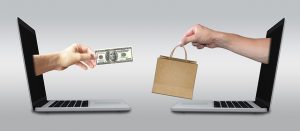 Culver City, along with 50 other cities in California, recently experienced a jump in sales tax from 10 percent to 10.25 percent. Martin Feinberg, Realtor, notes that the new Culver City sales tax took affect on Monday, April 1st.
Culver City, along with 50 other cities in California, recently experienced a jump in sales tax from 10 percent to 10.25 percent. Martin Feinberg, Realtor, notes that the new Culver City sales tax took affect on Monday, April 1st.
With the new sales tax, Culver City’s tax is now three percent over the state of California’s minimum sales tax. California’s minimum sales tax is 7.25 percent.
The first time that the Culver City Real Estate area delved into taxes over 10 percent was in 2013. At that time voters passed a ½% increase in the sales tax for Culver City, but were told that the tax hike was temporary and would expire in 2023.
However, last year former City CFO Jeff Muir told the city council that the temporary tax would need to be made permanent. And more than that, he explained that the Culver City sales tax would need to be raised an additional ¼ percent.
Culver City, and 25 other cities in California, are unable to pay their bill without a sales tax of 10% or more. Santa Fe Springs is the only city in California that as a higher sales tax than Culver City. Their tax rate is 10.50 percent.
According to some websites the force behind many local sales tax increases is increasing public pension costs and public employee retiree healthcare. Data suggests that local sales tax increases are concentrated in California cities that have the largest pension problems.
Local listing agent Martin Feinberg also learned that the new Culver City sales tax wasn’t the only change state taxes. Online retailers are no longer immune from collecting sales tax. The new California law now requires out-of-state retailers such as Amazon to collect salves tax on goods sold in the state. While that might not be a happy development for Californians that shop online, the change is meant to help brick-and-mortar businesses that are loosing sales to their online counterparts.
